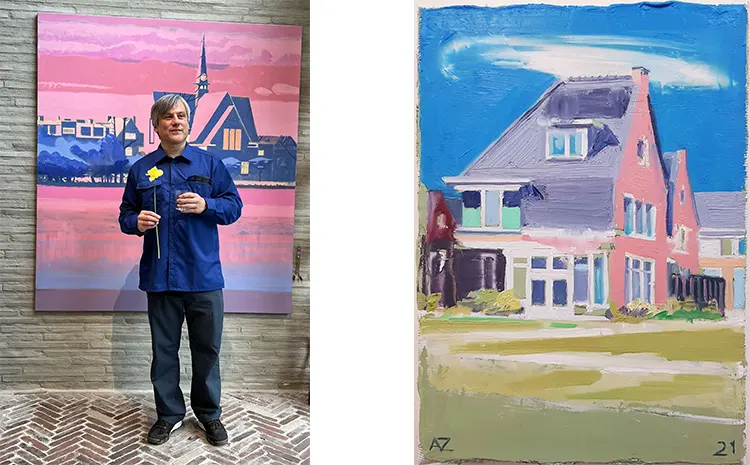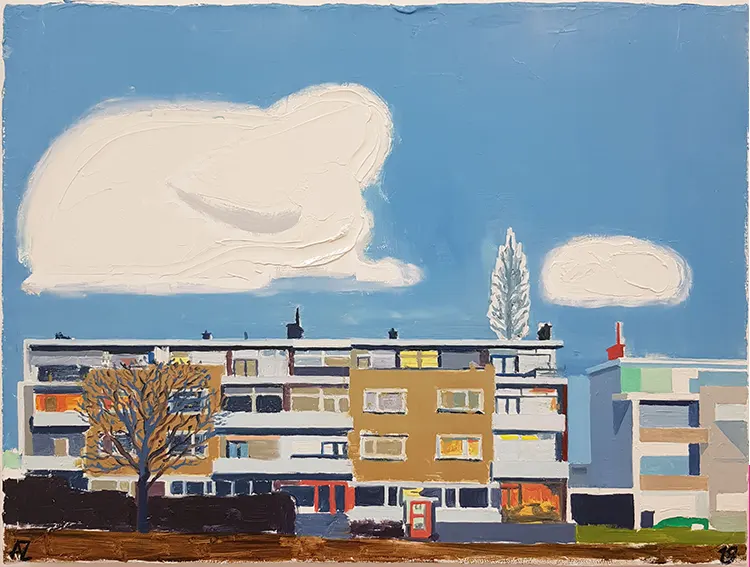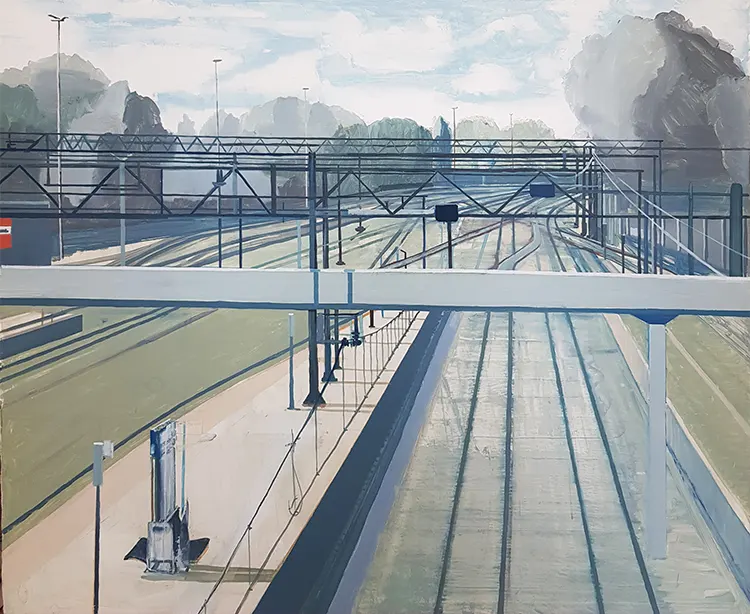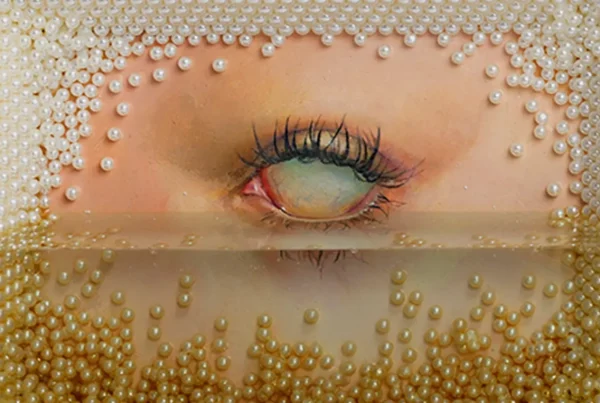“The layering in paint was so complex and fully concentrated, that I could only conclude that this is what painting is all about!”
The Artistic Journey of Dutch Painter Albert Zwaan
Albert Zwaan is a distinguished Dutch artist who specializes in crafting contemporary urban landscapes, originating from the charming town of Dordrecht in the Rotterdam region. His artistic journey began in uncertain circumstances, with a Dutch father and a mother hailing from the Dutch East Indies contributing to his diverse sources of inspiration.
The catalyst for his painting passion might have been a diary his father once brought home, a vivid collection of 17th-century Dutch genre paintings. Zwaan discovered an enchanting allure in the portrayal of everyday reality through the medium of paint, a revelation that ignited his alertness and appreciation for painting. Complementing this, occasional museum visits with his grandfather laid a robust foundation for his burgeoning interest in art.
From a tender age, Zwaan was drawn to the world of sketching, and it was in the mid-1980s that his creative expression took a significant turn. Inspired by the iconic book, “Subway Art,” he found himself fully immersed in the vibrant realm of graffiti art. A decade-long active participation in this scene eventually led Zwaan to yearn for a more rigorous artistic challenge. He sought to refine and expand his skills, prompting him to take the entrance examination for an art academy.
The St Joost Academy in Breda, located in the southern Netherlands, recognized Zwaan’s potential and admitted him into their esteemed institution. Over a span of five fulfilling years, he honed his skills as a contemporary painter and printmaker, ultimately graduating cum laude in 1999. This period at the academy not only offered Zwaan the resistance and challenge he sought but also cemented his position as a distinguished figure in the realm of contemporary art.

The Juxtaposition of Styles in Zwaan’s Urban Landscapes
Albert Zwaan identifies himself primarily as a purveyor of modern urban landscapes, where his figurative works serve as a platform for creative experimentation. His innovative approach involves the amalgamation of diverse styles and techniques, drawn from varying visual domains and historical periods, creating a unique juxtaposition of elements such as graffiti and impressionism, or a reinterpretation of a Nabis style cloud to complement an urban landscape drawn from his immediate environment.
Zwaan skillfully integrates elements from classic modern paintings with unexpected quotes from the cartoon world, all in a deliberate pursuit of an original visual language that resonates with his artistic sensibilities. He perceives the millennia-long history of painting and the abundance of visual culture not as obstacles, but as enriching sources of inspiration.
In the past, Zwaan predominantly employed urban landscape images sourced from the internet and complemented them with elements from his own sketches. However, in recent times, he has shown an inclination towards utilizing urban subjects from his immediate surroundings. He embraces the challenge of transforming ordinary themes from his modest town into extraordinary works of art.
For Zwaan, painting is an organic and analog process. The rhythm of his artistic creations dictates its own spirit of the age, independent of external influence, providing him with a profound sense of joy.
Zwaan’s formative years in graffiti art led him to explore numerous museums in the Netherlands and Belgium, most notably the Boijmans van Beuningen in Rotterdam. The museum’s extensive collection, encompassing diverse periods, significantly fueled his interest in the arts. Masterpieces by artists such as Bruegel, Jheronimus Bosch, Pieter Saenredam, Hercules Seghers, Odilon Redon, Adriaen Brouwer, Esajas van de Velde, Vincent van Gogh, Kokoschka, and Herman Kruyder, spanning the Middle Ages to contemporary times, left an indelible mark on Zwaan’s artistic vision, eventually inspiring him to embark on his journey as a painter.
While the museum’s ongoing renovation and expansion has temporarily deprived Zwaan of this source of inspiration, his longing for the museum reflects his deep appreciation for art in all its forms and periods.

The Personal Endeavors of Albert Zwaan
A dozen years past, Albert Zwaan embarked on a personal endeavor, founding his own art blog on Tumblr, aptly titled ‘MedVerf’. The blog was envisioned as a platform for amassing and sharing the most captivating contemporary paintings from around the globe. The sites that played a significant role in this pursuit included Tumblr, renowned for its avant-garde art scene, The Gallery Index Berlin, and platforms like Two Coats of Paint. This stimulating activity subsequently had an indelible impact on Zwaan’s own artistic work. However, as the years passed, the artist found it increasingly challenging to maintain this blog due to mounting commitments, and the ever-growing dominance of Instagram in the digital art world.
Zwaan’s studio is nestled in a picturesque rural setting, yet remains in close proximity to the cosmopolitan pulse of Randstad Holland. To maintain focus during his creative process, Zwaan often cloaks his workspace in privacy with translucent curtains, remaining undisturbed by unexpected guests. Adjacent to his studio, a room furnished with a sofa and adorned with a classic print collection provides a sanctuary for Zwaan to unwind and momentarily escape the challenges of contemporary life.
Music, particularly of the ambient and electro genres, is an essential component of Zwaan’s creative process. The studio, equipped with a refrigerator and coffee-making facilities, is an epitome of perfection in his view.
In addition to his digital explorations, Zwaan has delved deep into the annals of art history, scrutinizing a vast array of old art books filled with coloring pages. He continues to acquire second-hand books online, from antique stores, and book markets. The tactile nature of these books, their distinct smell, the classic high-quality print, and the accompanying texts, all contribute to the tranquility and concentration Zwaan needs for his thorough study of the depicted paintings. These traditional resources often reveal artworks absent from digital archives, showcasing unique facets of old masters.
Zwaan’s artistic affinities span various periods and styles including Dutch Impressionism, Flemish Expressionism, Les Nabis, the Fauvists, German Expressionism, and Outsider Art. These diverse influences reflect the artist’s extensive study and deep appreciation for the broad spectrum of artistic expression.

An Artist’s Medium: Zwaan’s Passion for Oil Paint
Undeniably, the evaluation of an artist’s quality possesses a deeply individual and subjective nature. For Albert Zwaan, the allure often lies in figurative art imbued with abstract elements – an attraction that is either present or absent, much like a resonant note that either strikes a chord or remains silent.
During Zwaan’s artistic residency in 2006 at the ‘Kunstfabrik am Flutgraben’ in Berlin, he encountered Matthias Weischer’s painting “Parade” at Galerie EIGEN + ART. This encounter sparked an instantaneous revelation, as if the essence of painting itself had been laid bare. The intricacy and intensity of the layering struck him with such potency that it illuminated the path of his artistic journey. Zwaan perceived this work as a blend of historical tradition and contemporary innovation. From that pivotal moment, oil paint became his primary medium.
Following this transformative experience, Zwaan immersed himself in the vibrant Berlin art scene for three years, a period of intense learning and growth. Initially, he had employed acrylic paint, a medium that he found could deliver commendable outcomes when applied in thin, meticulous layers. However, as his artistic practice evolved, Zwaan gradually transitioned towards the classic mediums of oil, gouache, and vinyl paint. He found these paints to be more dynamic and warmer, imbued with a lively materiality and radiance. They enabled him to seamlessly alternate between pasty and transparent applications. While gouache and vinyl were suitable for paper, he used oil for canvases or wooden panels.
In his etching work, Zwaan demonstrates a clear preference for a specific ink – “Charbonnel, Raw Sepia”. This choice reflects his discerning eye for the tools of his craft.
Dreaming of further artistic development, Zwaan envisions himself working for an extended period in an overseas guest studio. He imagines this studio nestled in the serene landscape of either Japan, Germany, or a British island, where he can wholly immerse himself in his paintings and etchings, undisturbed by the distractions of the outside world.






